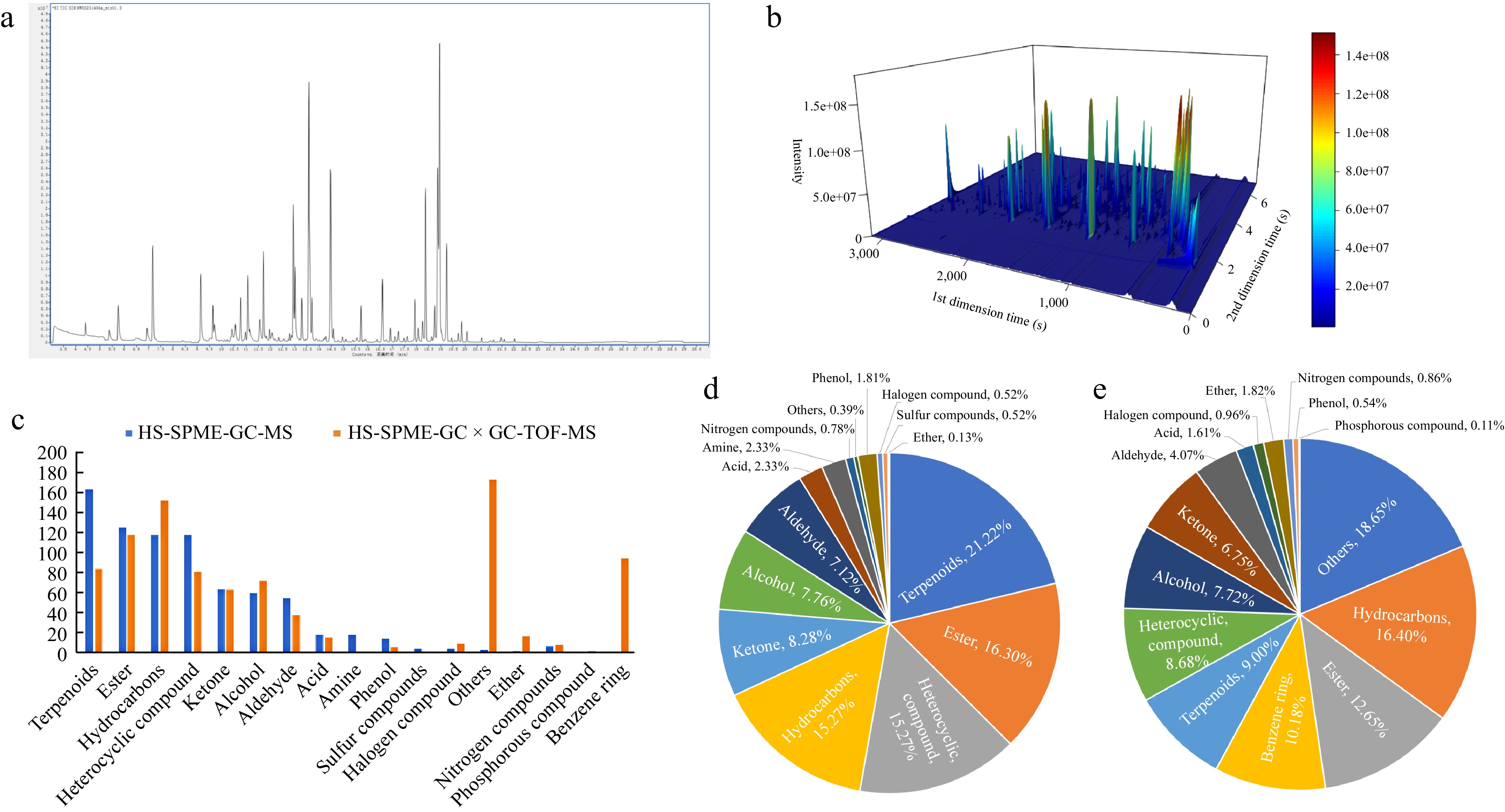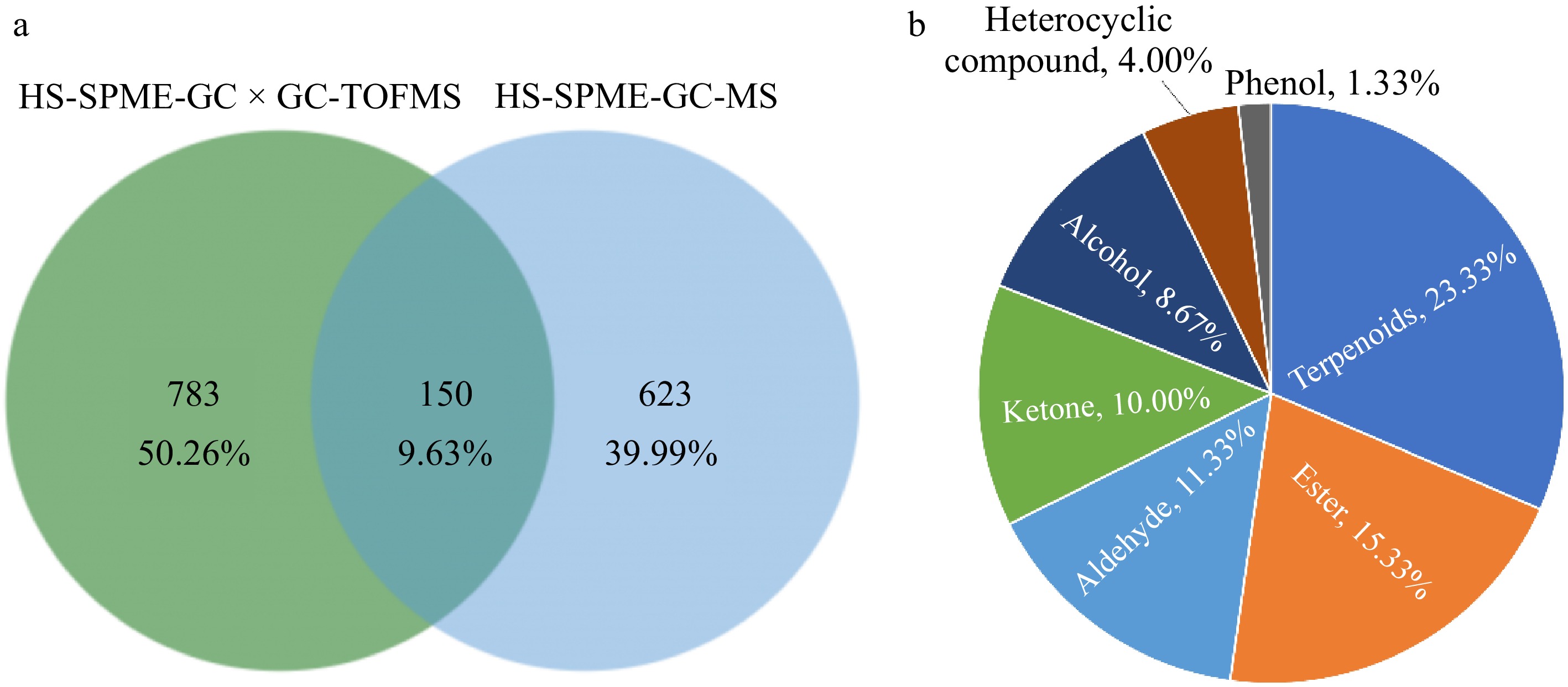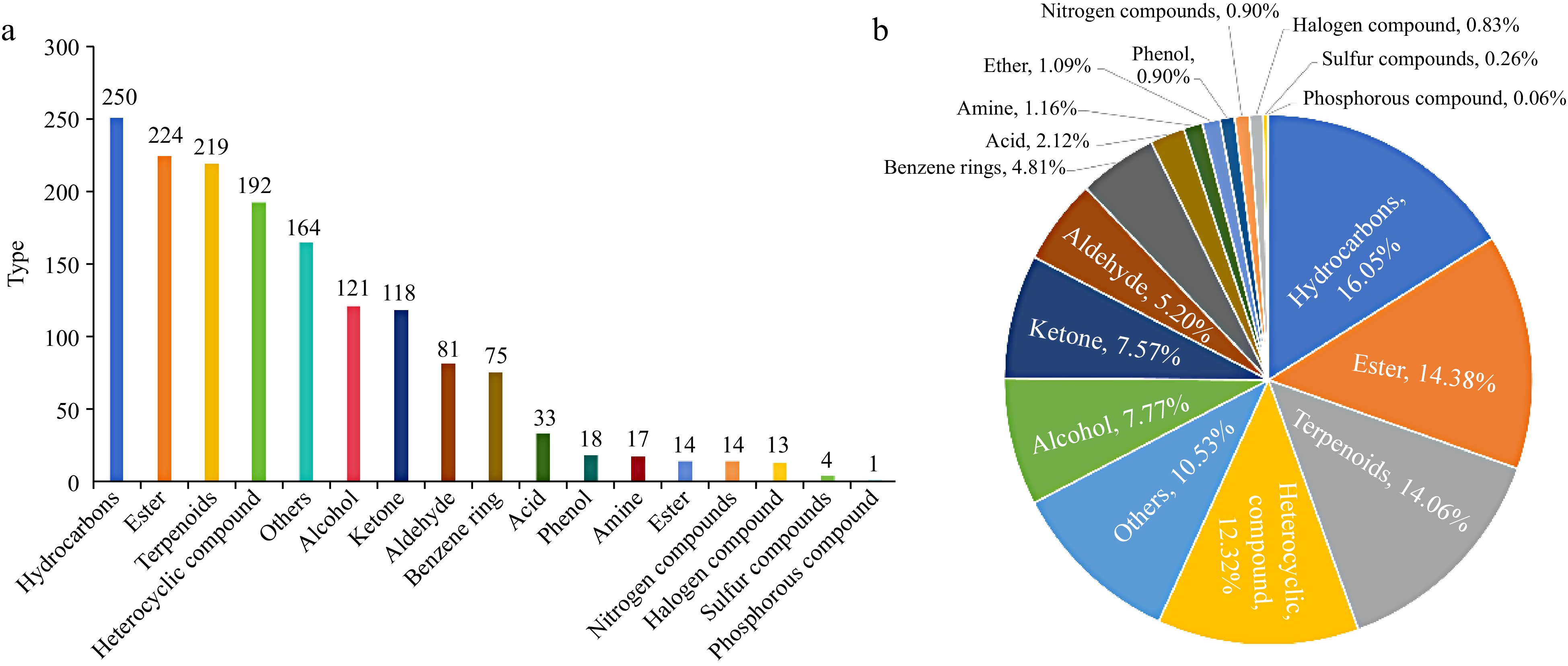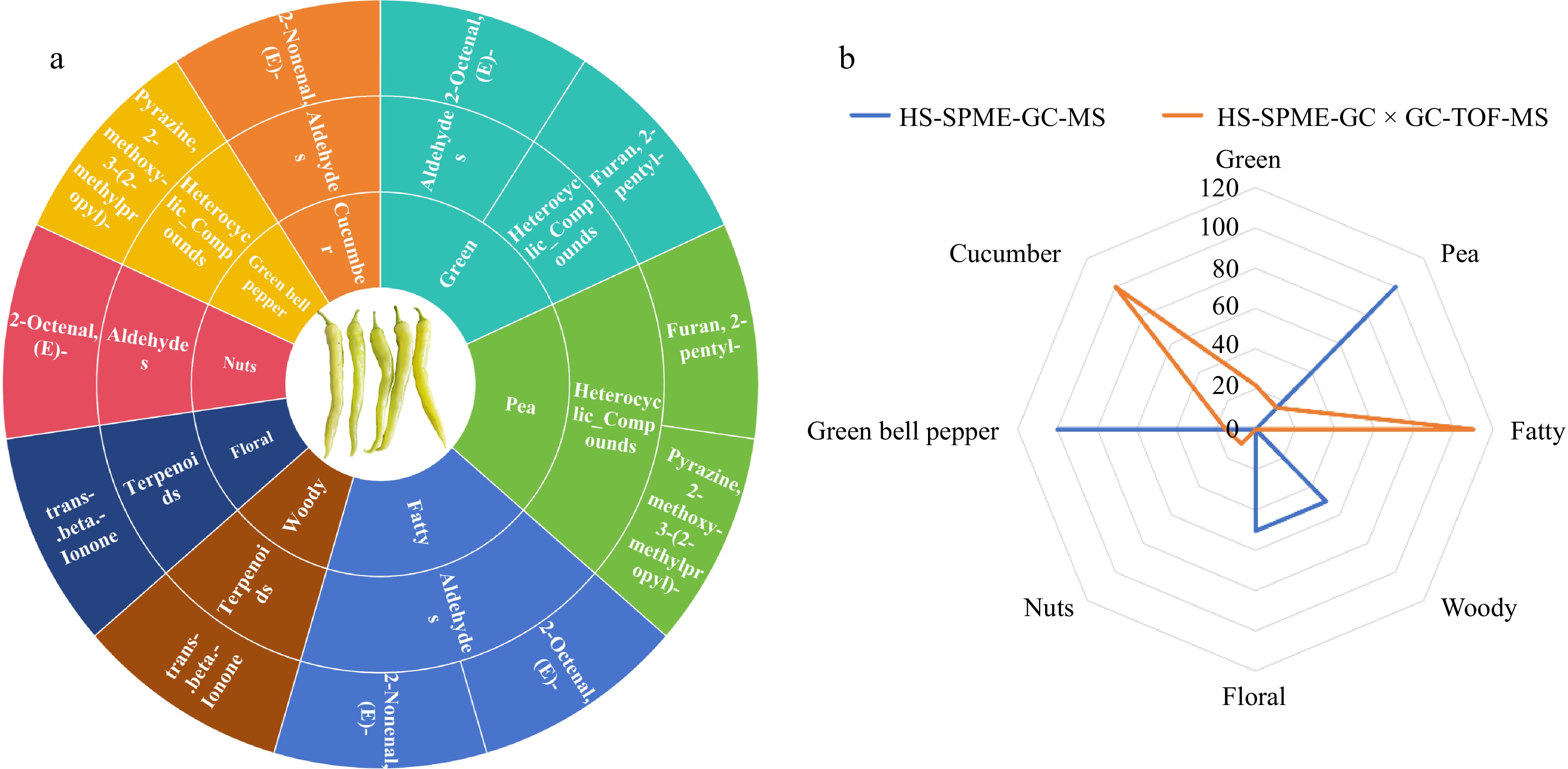-

Figure 1.
Effect of different detection methods on VOCs of capsicum. (a) Total ion flow diagram of VOCs detected by HS-SPME-GC-MS; (b) 3D chromatogram obtained by HS-SPME-GC × GC-TOFMS detection; (c) number of different types of VOCs in the two identification methods; (d) proportion of VOCs detected by HS-SPME-GC-MS in various categories of substances; (e) proportion of VOCs detected by HS-SPME-GC × GC-TOFMS in various categories of substances.
-

Figure 2.
Analysis of VOCs in chili peppers using different detection methods. (a) Differential Venn diagram of VOCs identified by two detection methods; (b) proportion of the total number of VOCs identified by two detection methods in each category.
-

Figure 3.
The effect of different detection methods on the relative content of VOCs in capsicum. (a) Relative content of different categories of VOCs obtained by HS-SPME-GC-MS identification; (b) relative contents of VOCs of different categories identified by HS-SPME-GC × GC-TOFMS.
-

Figure 4.
Comprehensive analysis of volatile VOCs in chili peppers. (a) Number of substances in each category of VOCs in chili peppers; (b) percentage of the number of substances in each category of VOCs in chili peppers.
-

Figure 5.
Analysis of the five main aroma VOCs in capsicum. (a) Flavor wheel of the five main aroma VOCs in chili. The outermost ring represents the name of the volatile organic compound, the middle ring represents the corresponding classification of the volatile organic compound, and the innermost ring represents the aroma characteristics of the volatile organic compound. (b) Radar map for analysis of sensory flavor characteristics of the five main aroma VOCs in chili. The outermost ring represents the sensory flavor characteristics, and the broken line represents the cumulative contribution rate of ROAV of the corresponding type.
-

Figure 6.
Analysis of 12 kinds of modified aroma VOCs in chili. (a) Twelve flavor wheels that modify the aroma VOCs in chili peppers. The outermost ring represents the name of the volatile organic compound, the middle ring represents the corresponding classification of the volatile organic compound, and the innermost ring represents the aroma characteristics of the volatile organic compound. (b) Radar map for analysis of sensory flavor characteristics of 12 modified aroma VOCs in chili. The outermost ring represents the sensory flavor characteristics, and the broken line represents the cumulative contribution rate of ROAV of the corresponding type.
-
technology Name Type Sensory flavor characteristics ROAV ROAV > 1 HS-SPME-GC-MS Pyrazine, 2-methoxy-3-(2-methylpropyl)- Heterocyclic compound Green bell pepper, pea 100.00 β-ionone Terpene Floral, woody 50.51 HS-SPME-GC ×
GC-TOFMS2-Nonenal, (E)- Aldehyde Fatty, cucumber 100.00 Pyrazine, 2-methoxy-3-(2-methylpropyl)- Heterocyclic compound Green bell pepper, pea 15.12 Furan, 2-pentyl- Heterocyclic compound Green beans, green 11.76 2-Octenal, (E)- Aldehyde Nuts, green, fatty 10.00 0.1 < ROAV < 1 HS-SPME-GC-MS 2-Thiophenemethanethiol Heterocyclic compound Coffee 0.76 Furaneol Heterocyclic compound Sweet, fruity 0.45 2,4-Decadienal, (E, E)- Aldehyde Fatty, waxy, 0.39 Cyclohexanone, 2,2,6-trimethyl- Ketone Thujone, sweet, floral 0.27 (2E,4Z)-2,4-Decadienal Aldehyde Fatty, green, waxy 0.19 Dodecanenitrile Nitrogenous compound Fruity, spicy 0.17 Dimethyl triSulfur compounds Sulfur-containing compound Sulfury, garlicy 0.12 3-Octen-2-one, (E)- Ketone Spicy, green, sweet, mushroom, fruity 0.11 HS-SPME-GC ×
GC-TOFMSHeptanal Aldehyde Citrus, fatty 0.98 1-Octen-3-one Ketone Mushroom 0.70 Pyrazine, 2-methoxy-3-(1-methylpropyl)- Heterocyclic compound Green, nut, pepper 0.27 2,6-Nonadienal, (E, Z)- Aldehyde Fruity, green 0.25 Table 1.
Key volatile flavor substances.
Figures
(6)
Tables
(1)